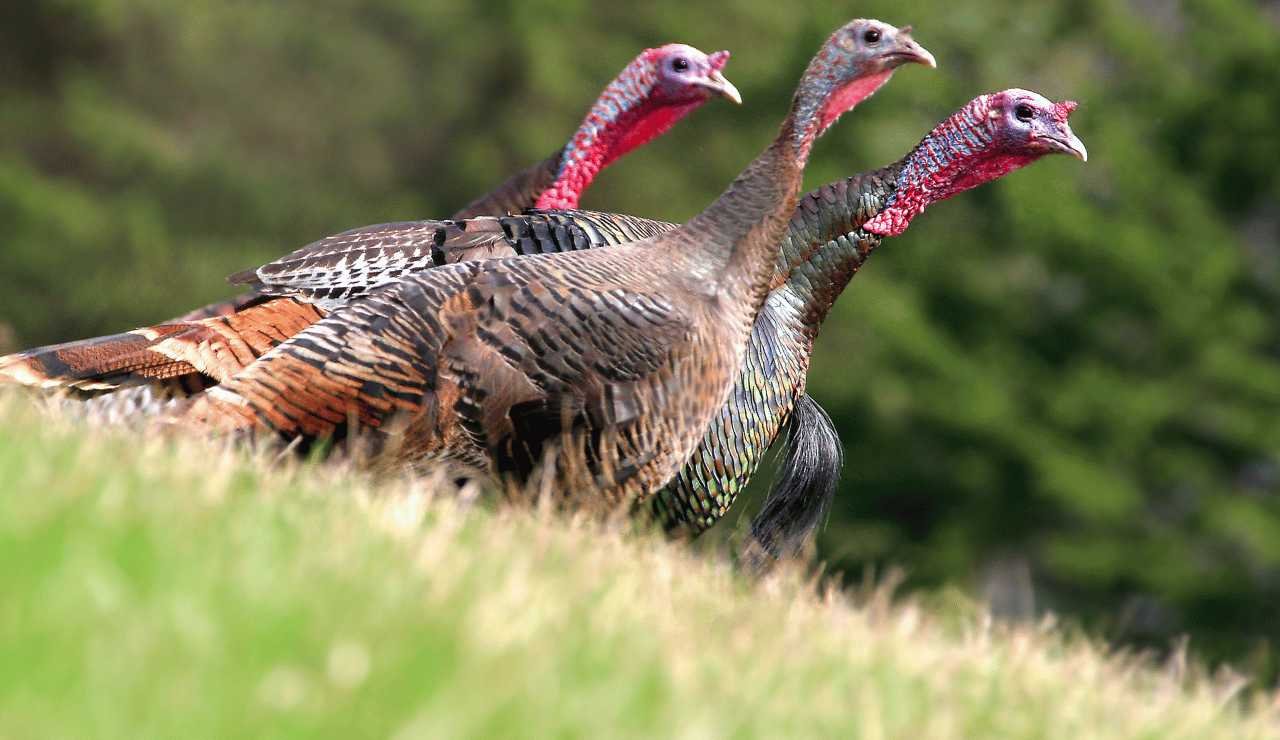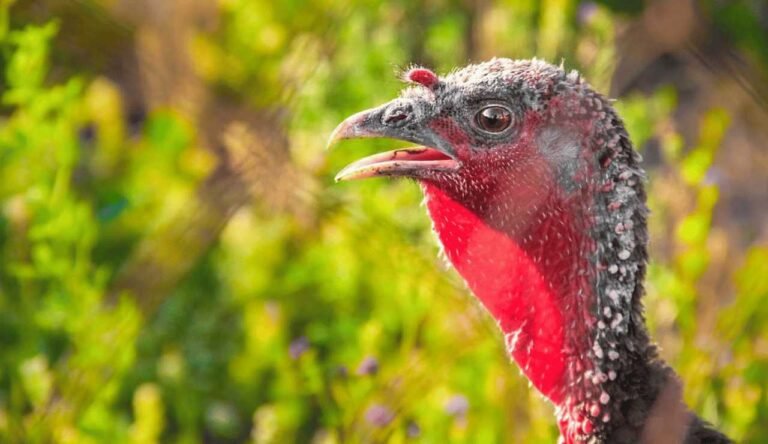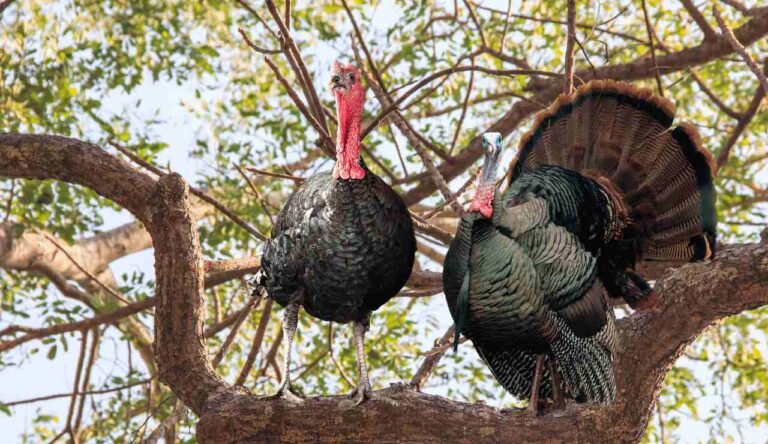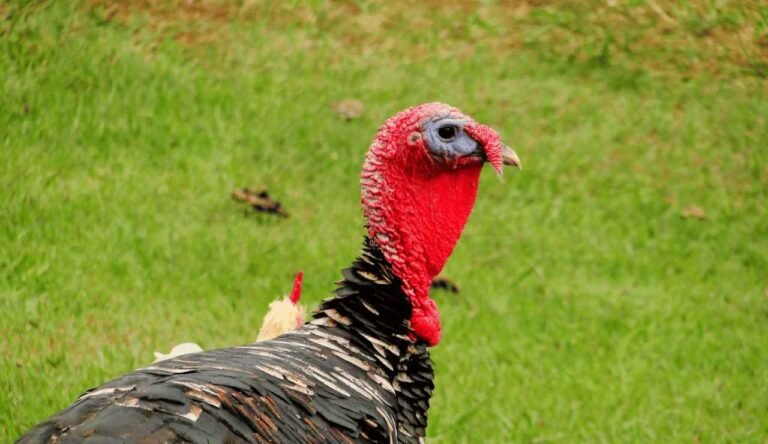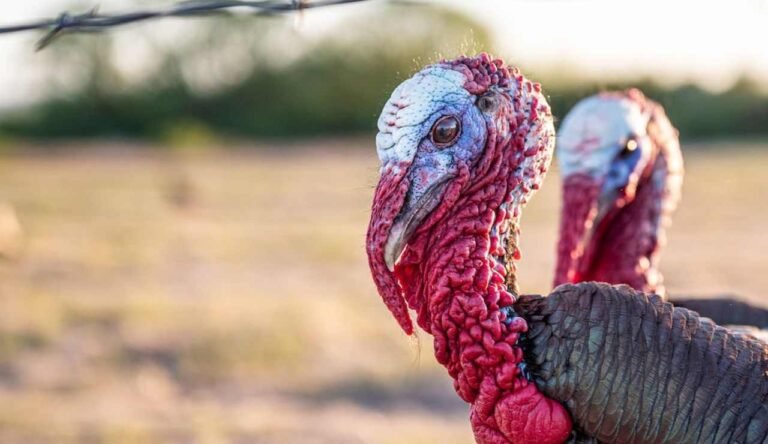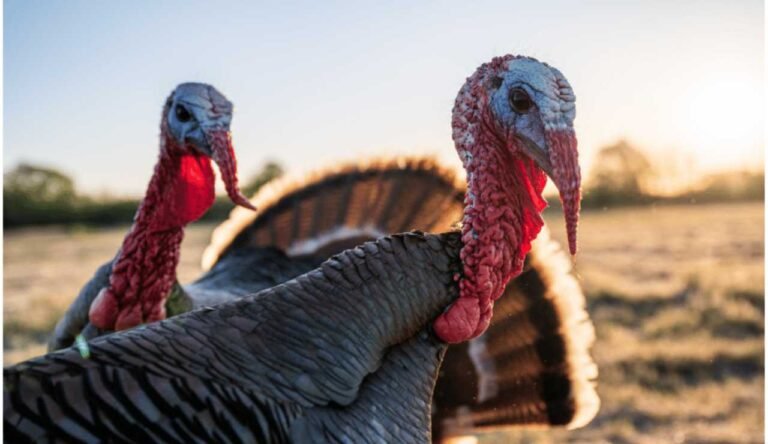Can Wild Turkeys Fly? Discovering The Flight Capabilities of Turkeys!
Native to North America, wild turkeys are intriguing birds often connected to the Thanksgiving season. But have you ever questioned whether these large ground-dwelling birds can fly? Wild turkeys could be better flyers, yet they can go short distances in the air at amazing speed. The capacity of wild turkeys to fly and the factors that influence it will be discussed in this post. So let’s get started and discover more about these amazing birds.
Can Wild Turkeys Fly?
Wild turkeys can fly, although their capacity is rather restricted. Wild turkeys have adapted to walking since it is where they do most of their foraging. While required, such as while evading predators or spending the night in trees roosting, they can fly short distances of up to 400 meters. They cannot fly for long periods, and most of the time, they only use short bursts of flight to flee from danger or relocate to a higher roosting location. Wild turkeys can fly low to the ground, down mountains, or through forests because of their big wings and slender necks, but they prefer to run. The fact that domestic turkeys, who are primarily raised for their flesh, have restricted flying capabilities because of their size and weight must be noted.
| Species | Flight Capability |
|---|---|
| North American Wild | Adept flier, reaching speeds up to 55 mph for short distance |
| Ocellated | Strong flier, flies closer to the ground for short distance |
| Gould's | Relatively weak flier, tends to stay on the ground |
| South Mexican | Slightly better flier than Gould's, but mostly stays on ground |
| Mexican Wild | Also slightly better flier than Gould's, mostly stays on ground |
| Rio Grande | Similar flight capability to North American wild, but flies shorter distances |
Physical differences between domestic and wild turkeys that affect their flight
| Physical Characteristics | Wild Turkeys | Domestic Turkeys |
|---|---|---|
| Body Size | Smaller and leaner body | Larger and heavier body |
| Wing Size and Structure | Longer and more pointed wings with stronger muscles | Shorter and rounded wings with weaker muscles |
| Feather Structure | Broader and more aerodynamic feathers | Fluffier and less aerodynamic feathers |
| Leg Muscles | More developed and powerful leg muscles | Less developed and weaker leg muscles |
Their physical traits significantly influence the capacity of wild and domestic turkeys to fly. Wild turkeys are more aerodynamic and effective flyers because of their smaller, slimmer bodies, longer, more pointed wings, and stronger muscles. Additionally, they have wider and more aerodynamic feathers, enabling them to fly quickly over short distances.
Domestic turkeys, on the other hand, have bigger, heavier bodies, shorter, rounder wings, and weaker muscles. Since their feathers are fluffier and less aerodynamic, they have a harder time gaining lift and maintaining long-distance flight. Their leg muscles are also weaker and less developed, hindering their flying ability.
Overall, wild turkeys’ physical traits are more fitted for flight than domestic turkeys, which have been better adapted for meat output rather than flying ability.
Anatomy of Wild Turkeys
| Physical Characteristics | Wild Turkeys | Domestic Turkeys |
|---|---|---|
| Breast Muscles | Large and muscular, providing power for flight | Smaller and less developed due to selective breeding for meat production |
| Legs | Long and strong, enabling quick running and takeoff | Shorter and less strong |
| Wingspan | 4.5 to 5 feet | Shorter wingspan |
| Flight Feathers | Strong and necessary for flight | Weaker and less necessary for flight |
| Weight | 5 to 20 pounds | Heavier due to selective breeding for meat production |
Flight capability comparison of different turkey species
| Turkey Species | Flight Capability | Flight Distance | Flight Speed |
|---|---|---|---|
| North American Wild Turkey | Strong flier | Up to 15 meters | Up to 55 mph |
| Ocellated Turkey | Strong flier | Shorter distances close to ground | N/A |
| Gould's Turkey | Weak flier | Stays on ground | N/A |
| South Mexican Turkey | Limited flight capability | Stays on ground | N/A |
| Mexican Wild Turkey | Limited flight capability | Stays on ground | N/A |
| Rio Grande Turkey | Strong flier, but shorter distances | Shorter distances | N/A |
How far can Wild Turkey fly?
Their flight is usually limited to short distances of around 400 meters and is used primarily for escaping predators or reaching a tree branch for roosting. Wild turkeys have the ability to fly, but they spend most of their time feeding on the ground, where they walk. Turkeys may technically fly a mile in a single wingbeat, but in reality they often cover little more than 100 yards. Although they prefer running to flying, wild turkeys are still excellent flyers with broad wings that enable them to move through woodlands or down mountains in hilly areas. Wild turkeys are more adapted for ground mobility than quick, explosive flights.
How fast can Turkeys fly?
They can travel at up to 55 mph speeds, which helps them avoid predators and get to safety. Wild turkeys usually fly close to the ground unless they are searching for secure locations to roost at night. Although turkeys can fly, they typically only do so for short distances. They can fly high enough to reach tree branches, generally 6 to 9 meters high but sometimes as high as 15 meters. Turkeys can fly in short bursts but not over great distances. On the other hand, domestic turkeys are often larger and unable to fly. In conclusion, wild turkeys may fly up to 55 mph for brief periods, generally to avoid predators or find secure roosting locations.
How high can Turkeys fly?
They typically fly low to the ground, except when they need to roost in trees at night for protection from predators. The highest roosting locations for turkeys are around 15 meters (50 feet) above the ground, the height they may fly to reach the principal branches of trees with wide leaves. Roosting locations often vary in height from 6 to 9 meters (20 to 30 feet). They can travel up to 55 mph for brief periods but cannot fly at very high altitudes. On the other hand, domestic turkeys are larger and unable to fly. Although they prefer to run, wild turkeys can fly to a certain extent. They use their ability to fly to avoid predators and to find secure places to roost at night.
Factors Affecting Turkey Flight Ability
| Factors Affecting Turkey Flight Ability |
|---|
| Age and gender of the turkey |
| - Young turkeys are more likely to fly than older ones. |
| - Male turkeys generally fly more than females. |
| Habitat and terrain |
| - Turkeys are more likely to fly in open areas with tall trees to perch on. |
| - They are less likely to fly in dense forests or urban areas. |
| Weather conditions |
| - Turkeys avoid flying in strong winds, heavy rain or snow. |
| Wing and feather structure |
| - Longer wings and primary feathers provide more lift and control during flight. |
| - Healthy feathers are important for efficient flight, as damaged or worn-out feathers can hinder their ability to fly. |
Other Turkey Movements
| Turkey Movements | Description |
|---|---|
| Running | With a top speed of up to 25 mph, turkeys are known for having quick feet on the ground. Running is mostly used by them to avoid predators or to obtain food. |
| Walking | Turkeys mostly move by walking, particularly when hunting for food or covering small distances. They can move steadily across uneven ground, and their strong legs enable them to ascend steep hills. |
| Jumping | Although turkeys are not known for their ability to jump, they can do so when necessary to cross low obstructions like fences or small streams. |
| Gliding | Turkeys can only glide over little distances; they often do so from low perches to the ground. Although they cannot sustain flight, they can use their wings to slow their descent and protect themselves from harm when they land. |
Interesting Facts about Wild Turkeys and Their Flying Abilities
- They can sprint and leap because of their strong legs.
- Turkeys may soar up to 15 meters in height, although they normally only fly short distances.
- They use flight to flee predators and spend the night roosting on trees.
- Wild turkeys can fly more easily because of their large wings and distinctive feather structure.
- Using their wings, they can glide for short distances, much as a chicken can.
- Male turkeys can produce thunderous sounds that may be heard up to a mile away by expanding the air sacs in their chests.
Conclusion
In conclusion, wild turkeys can fly short distances at up to 55 miles per hour, utilizing their muscular legs and big wings with distinctive feather structures. They mostly use flight to avoid predators and roost in trees at night. They can also glide for short distances and use various modes of movement like running, walking, and leaping.
Overall, the capacity of wild turkeys to fly is critical to their survival and plays an essential part in their daily activities. Despite their size and weight, they have adapted to their surroundings by developing effective flight and various ways of mobility. Understanding these aspects may help us learn more about the behavior and ecology of these intriguing birds.
Frequently Asked Questions
Are wild turkeys better fliers than domestic turkeys?
Domesticated turkeys cannot fly as quickly as wild turkeys, which may achieve speeds of up to 55 miles per hour in flight. This is the result of selective breeding for meat production. Domestic turkeys are often bred for their size and breast muscles, resulting in their incapacity to fly. As a result, wild turkeys are better at flying than domestic turkeys.
What physical traits enable wild turkeys to fly?
Wild turkeys can fly because their large wings and small neck make them more aerodynamic during flight. They also have a smaller body weight than domestic turkeys, enabling them to fly with more lift and agility. However, wild turkeys spend the vast majority of their time on the ground, as their bodies are optimized for walking. They only fly when required, such as to avoid predators or to reach roosting areas.
Are all wild turkey species capable of flying equally?
All five subspecies of wild turkeys found in North America can fly, though their abilities vary. Wild turkeys are mostly specialized for walking and feeding on the ground, and they only fly short distances when required, such as to avoid predators or reach roosting areas. Their broad wings and slim neck aid in flight, and their lighter body weight allows for greater lift and maneuverability compared to domestic turkeys. While all subspecies can fly, differences in body size and weight may cause differences in flying abilities.
How do wild turkeys' flight capabilities compare to other birds?
Wild turkeys are weak fliers with limited flight capabilities compared to other birds. They can fly short lengths of up to 400 meters at speeds of up to 55 miles per hour, but not at high heights. They have a wingspan of 4.1 to 4.8 feet and have wide, rounded wings. Wild turkeys have powerful legs that allow them to run at speeds of up to 25 miles per hour, making them more adapted to locomotion at higher speeds. Overall, their wings are built for brief bursts rather than lengthy, continuous flights.
Do male and female wild turkeys have different flight capabilities?
The flying abilities of male and female wild turkeys are not dramatically different. Both sexes can fly short distances at rates of up to 89 kilometers (55 miles) per hour, although sprinting on the ground is their principal strategy for evading predators. Size and color variations between men and women do not impair their flying skills. As a result, both genders can fly but choose to stay on the ground.
- Florida Turkey Season 2025-2026: Latest Hunting Dates, Licenses & Rules Available! - October 16, 2025
- Delaware Turkey Season 2025-2026: [Everything You Need to Know Dates, Regulations, Bags & More] - October 16, 2025
- Connecticut Turkey Season 2025-2026: [Dates, Regulations, Bag Limits & More] - October 16, 2025
